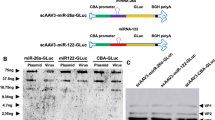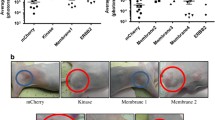Abstract
Background: Previous studies demonstrated that excess IL-6 production correlated with the metastatic potential of rat hepatocellular carcinoma cells. In the work reported here a retroviral construct containing the gene for murine IL-6 was introduced into otherwise nonmetastatic tumor cells to directly determine the effect of IL-6 overexpression on tumor metastatic potential.
Methods: The clonal cell lines 1682.C.2.9.L0 (L0, poorly metastatic) and 1682.C.2.9.L10 (L10, highly metastatic) were selected from a parental hepatocellular carcinoma induced in ACI rats by feeding an ethionine-containing diet. Viral supernatant was used to infect the PA317 amphotropic cell line, and retrovirus produced from these cells infected the poorly metastatic L0 hepatocellular carcinoma cell line. Neomycin-resistant cells were selected in G418 and designated L0-IL-6.
Results: As determined by bioassay, L0 cells produce 10±1.2 U/mL IL-6 in culture, whereas L10 cells release 95±11 U/mL (P<0.01, Student'st-test). Retroviral-mediated IL-6 gene transfer resulted in the production of 1266±48 U/mL IL-6 by L0-IL-6 cells under identical culture conditions. When an inoculum of 5×106 cells is injected subcutaneously, both L0 and L10 cell lines result in primary tumors with equivalent rates of growth; only L10 cells metastasize to the lung, however. A similar inoculation of L0-IL-6 cells produced local tumors in all 24 animals tested. Interestingly, 15 of 24 (62%) animals presented with metastatic nodules in the abdominal cavity, whereas no such tumors were found in animals receiving L10 cells.
Conclusion: Overexpression of IL-6 increases metastatic potential of tumor cells, with preferential metastases to the abdominal cavity when compared with tumor cells elaborating endogenous IL-6.
Similar content being viewed by others
References
Kishimoto T. The biology of interleukin-6.Blood 1989;74:1–10.
Mateo RB, Reichner JS, Albina JE. Interleukin-6 activity in wounds.Am J Physiol 1994;266:R1840–4.
Sehgal P. Interleukin 6 in infection and cancer.Proc Soc Exp Biol Med 1990;195:183–91.
Scambia G, Testa U, Benedetti Panici P, et al. Prognostic significance of interleukin 6 serum levels in patients with ovarian cancer.Br J Cancer 1995;71:354–6.
Berek JS, Chung C, Kaldi K, Watson JM, Knox RM, Martinez-Maza O. Serum interleukin-6 levels correlate with disease status in patients with epithelial ovarian cancer.Am J Obstet Gynecol 1991;164:1038–43.
Seymour JF, Talpaz M, Hagemeister FB, Cabanillas F, Kurzrock R. Clinical correlates of elevated serum levels of interleukin-6 in patients with untreated Hodgkin's disease.Am J Med 1997;102:21–8.
Bataille R, Jourdan M, Zhang XG, Klein B. Serum levels of interleukin 6, a potent myeloma cell growth factor, as a reflect of disease severity in plasma cell dyscrasias.J Clin Invest 1989;84:2008–11.
Zhang XG, Klein B, Bataille R. Interleukin-6 is a potent myelomacell growth factor in patients with aggressive multiple myeloma.Blood 1989;74:11–3.
Tamm I, Cardinale I, Krueger J, Murphy JS, May LT, Sehgal PB. Interleukin 6 decreases cell-cell association and increases motility of ductal breast carcinoma cells.J Exp Med 1989;170:1649–69.
Serve H, Steinhauser G, Oberberg D, Flegel WA, Northoff H, Berdel WE. Studies on the interaction between interleukin 6 and human malignant nonhematopoietic cell lines.Cancer Res 1991;51:3862–66.
Demartis A, Bernassola F, Savino R, Melino G, Ciliberto G. Interleukin 6 receptor superantagonists are potent inducers of human multiple myeloma cell death.Cancer Res 1996;56:4213–8.
Lu C, Kerbel RS. Interleukin-6 undergoes transition from paracrine growth inhibitor to autocrine stimulator during human melanoma progression.J Cell Biol 1993;120:1281–8.
Kerbel RS. Expression of multi-cytokine resistance and multi-growth factor independence in advanced stage metastatic cancer. Malignant melanoma as a paradigm.Am J Pathol 1992;141:519–24.
Reichner JS, Mulligan JA, Palla M, Hixson DC, Albina JE, Bland KI. Interleukin-6 production by rat hepatocellular carcinoma cells is associated with metastatic potential but not with tumorigenicity.Arch Surg 1996;131:360–5.
Hixson DC, McEntire KD, Obrink B. Alterations in the expression of a hepatocyte cell adhesion molecule by transplantable rat hepatocellular carcinomas.Cancer Res 1985;45:3742–9.
Brandt SJ, Bodine DM, Dunbar CE, Nienhuis AW. Dysregulated interleukin 6 expression produces a syndrome resembling Castleman's disease in mice.J Clin Invest 1990;86:592–9.
Miller DA, Miller DG, Garcia JV, Lynch CM. Use of retroviral vectors for gene transfer and expression.Methods in Enzymology 1993;217:581–99.
Nesbitt JE, Fuller GM. Differential regulation of interleukin-6 receptor and gp130 gene expression in rat hepatocytes.Mol Biol Cell 1992;3:103–12.
Ikeda M, Ikeda U, Ohara T, Kusano E, Kano S. Recombinant interleukin-6 inhibits the growth of rat mesangial cells in culture.Am J Pathol 1992;141:327–34.
Fidler IJ, Hart IR. Biological diversity in metastatic neoplasms: origins and implications.Science 1982;217:998–1003.
Liotta LA, Stetler-Stevenson WG. Tumor invasion and metastasis: an imbalance of positive and negative regulation.Cancer Res 1991;51:5054S-9S.
Santhanam U, Ray A, Sehgal PB. Repression of the interleukin 6 gene product promoter by p53 and the retinoblastoma susceptibility gene product.Proc Natl Acad Sci USA 1991;88:7605–9.
Fearon ER, Vogelstein B. A genetic model for colorectal tumorigenesis.Cell 1990;61:759–67.
Borsellino N, Belldegrun A, Bonavida B. Endogenous interleukin 6 is a resistance factor for cis-diamminedichloroplatinum and etoposide-mediated cytotoxicity of human prostate carcinoma cell lines.Cancer Res 1995;55:4633–9.
Schwarze MMK, Hawley RG. Prevention of myeloma cell apoptosis by ectopic bcl-2 expression or interleukin 6-mediated up-regulation of bcl-xL.Cancer Res 1995;55:2262–5.
Fidler IJ, Ellis LM. The implications of angiogenesis for the biology and therapy of cancer metastasis.Cell 1994;79:185–8.
Weidner N, Carroll PR, Flax J, Blumenfeld W, Folkman J. Tumor angiogenesis correlates with metastasis in invasive prostate carcinoma.Am J Pathol 1993;143:401–9.
Cohen T, Nahari D, Cerem L, Neufeld G, Levi B-Z. Interleukin 6 induces the expression of vascular endothelial growth factor.J Biol Chem 1996;271:736–41.
Author information
Authors and Affiliations
Rights and permissions
About this article
Cite this article
Reichner, J.S., Mulligan, J.A., Spisni, R. et al. Effect of IL-6 overexpression on the metastatic potential of rat hepatocellular carcinoma cells. Annals of Surgical Oncology 5, 279–286 (1998). https://doi.org/10.1007/BF02303786
Received:
Accepted:
Issue Date:
DOI: https://doi.org/10.1007/BF02303786




